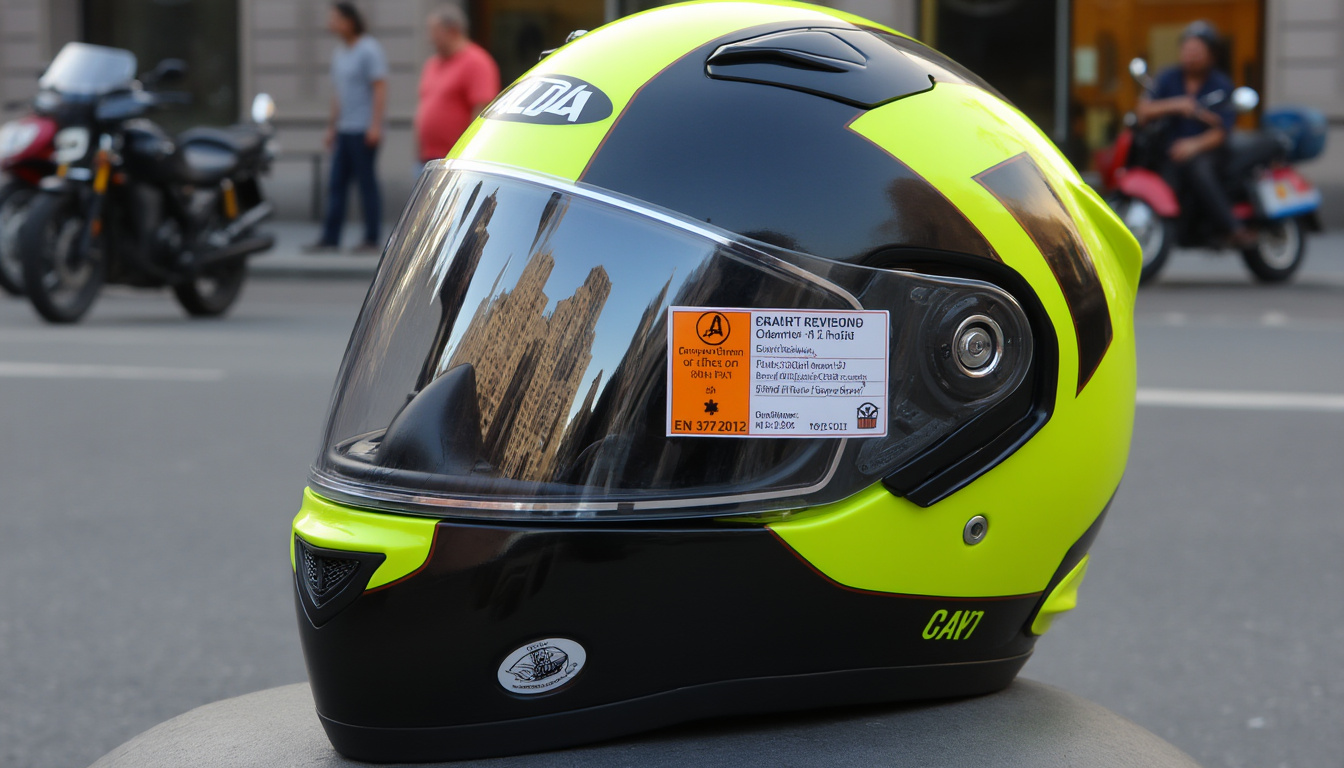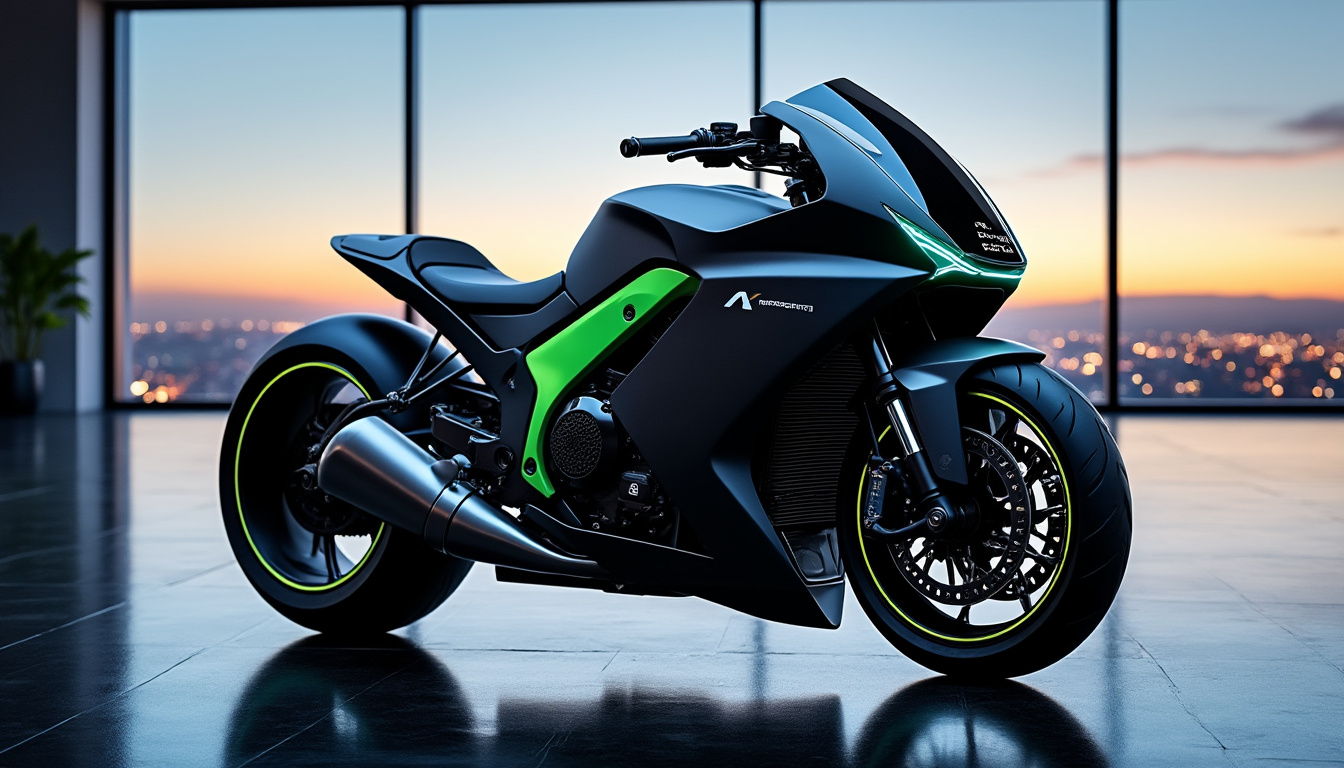Motorcyclists worried about new regulations: towards increased protection or dreaded fines?

The recent regulations challenging motorcyclists have raised serious concerns. With the implementation of new safety standards and the obligation of technical inspections, motorcyclists are wondering if these measures are truly intended to protect road users or if they are primarily a means to generate revenue through fines. This duality lies at the heart of the concerns of motorcycle stakeholders in 2025, and the motorcycling community is divided between worry and hope.
Regulatory changes that directly impact motorcyclists
Road safety legislation, particularly for motorcyclists, is undergoing a decisive turning point with the adoption of new regulations. Starting July 1st, a strict European standard, standard 22.06, will be applied concerning motorcycle helmets. This measure aims to enhance the safety of riders and passengers but also raises questions about the budget of motorcyclists.

This new standard has been met with mixed feelings by members of the motorcycling community. Eric Thiollier, a representative of the French Federation of Angry Motorcyclists, stated: “This is a development that goes in the right direction for better safety for motorcyclists.” At the same time, users like Maxime are worried about the additional expenses that these new requirements impose.
Compliance with the new helmets will require a more significant investment, and although the use of older models (standard 22.05) will still be permitted after July 1st, they will be withdrawn from sale starting January 1, 2024. Motorcyclists will therefore have to systematically consider renewing their gear. Here is an overview of the new regulations concerning safety and costs that may prompt motorcyclists to think twice before every purchase:
- Helmet standard 22.06 imposing stricter controls.
- Withdrawal of 22.05 helmets from sale starting 2024.
- Concerns about the rising costs associated with the approval of new products.
- Possibility to keep older models until stocks are exhausted.
- Equipment costs could discourage access to motorcycling.
This situation occurs within a context where the safety of motorcyclists remains a major concern. Indeed, motorcycle fatalities are decreasing at a slower rate than those of other drivers according to the National Interministerial Observatory for Road Safety. The regulations in place aim to reduce these figures, but the means of implementation have sparked debates.
| Regulation | Effective Date | Impact on Motorcyclists |
|---|---|---|
| Helmet standard 22.06 | July 1, 2025 | New safety standards but increased costs |
| Withdrawal of 22.05 helmets | January 1, 2024 | Obligation to renew equipment |
| Technical inspection for motorcycles | Before October 1, 2025 | Additional cost and administrative constraints |
This summary table shows how upcoming legislation can transform the daily lives of motorcyclists by increasing not only their expenses but also their commitment to road safety.
Technical inspections: a heated debate within the motorcycling community
Starting October 2025, motorcyclists will be required to undergo a technical inspection for their two-wheeled vehicles. This new framework aims to ensure the safety of motorcycles and scooters by checking their mechanical and safety equipment. While some believe this is necessary to prevent accidents, others see it as an unnecessary constraint.

The technical inspection for motorcycles has been a topic of controversy. For some motorcyclists, it is a step forward that could enhance road safety. Ivan, a motorcycle enthusiast, expressed his concerns: “The world of motorcycling can be expensive and difficult to access for many people, and this could deter more than one.”
On the opposite side, fervent advocates of this measure, like Jean-Luc, suggest that the savings from the removal of VAT on safety equipment could offset these new burdens. Here are some of the arguments put forward from both sides:
- Arguments for technical inspections :
- Systematic checking of the condition of vehicles.
- Reduction of accidents due to technical failures.
- Standardization of safety requirements across all motorcycles.
- Systematic checking of the condition of vehicles.
- Reduction of accidents due to technical failures.
- Standardization of safety requirements across all motorcycles.
- Arguments against technical inspections :
- Additional costs for motorcyclists already facing significant expenses.
- Perception of a punitive rather than preventive measure.
- Uncertainty about the reliability of inspection centers.
- Additional costs for motorcyclists already facing significant expenses.
- Perception of a punitive rather than preventive measure.
- Uncertainty about the reliability of inspection centers.
These reflections clearly show that the implementation of technical inspections could be problematic. Furthermore, the requirement for compliance could be discouraging for new motorcyclists, thus diminishing their appetite for learning and engagement in this field.
| Aspects of technical inspections | Advantages | Disadvantages |
|---|---|---|
| Safety verification | Potential improvement in safety | Additional costs for motorcyclists |
| Standardization | Uniformity of rules for all | Risk of reliance on inspection centers |
| Accident prevention | Potentially fewer accidents | Negative perception as punishment |
These reflections highlight the complexity of a regulation whose ultimate goal is to eradicate safety issues while causing increasing concerns among motorcyclists.
The new safety requirements: what implications for equipment?
Safety has become a priority for authorities, and new regulations emphasize the equipment for motorcyclists. In 2025, it will be imperative to wear certified helmets, but also to opt for protective clothing. These measures aim to reduce serious injuries in accidents.

It is reasonable to question the impact on equipment purchases. The cost of equipment can vary significantly between brands and types of products. Brands like *KTM*, *Ducati*, and *Harley-Davidson* traditionally position themselves in the high-end range, while others, like *Honda*, *Yamaha* or *Suzuki*, offer more varied options. This debate places motorcyclists in front of the dilemma of choosing between safety and budget.
Furthermore, proposals are emerging. Tanguy, an experienced motorcyclist, suggests that additional equipment such as protective pants or jackets should also be mandatory. The strengthening of protection could thus ensure users better safety.
- Mandatory equipment in 2025 :
- Helmet certified according to standard 22.06.
- Approved motorcycle gloves.
- Appropriate protective clothing for all motorcyclists.
- Helmet certified according to standard 22.06.
- Approved motorcycle gloves.
- Appropriate protective clothing for all motorcyclists.
- Associated costs :
- Initial purchase of costly equipment.
- Potential increase in costs in the market.
- Recurring expenses for renewing gear.
- Initial purchase of costly equipment.
- Potential increase in costs in the market.
- Recurring expenses for renewing gear.
It is thus crucial to be aware of the necessity of budgetary vicissitudes when learning that essential safety equipment is being implemented. Motorcyclists will need to carefully consider the composition of their safety gear so as not to compromise their financial well-being.
| Equipment | Average cost | Estimated lifespan |
|---|---|---|
| Helmet compliant with standard 22.06 | €250 | 5 years |
| Protective clothing | €300-600 | 3 years |
| Approved gloves | €50-100 | 2 years |
This information paints a constantly evolving picture regarding safety requirements. Road safety can be a concern within the context of riding, but it must also be addressed from an economic standpoint.
Dreaded fines and increased surveillance: the new road environment for motorcyclists
With the introduction of these new measures, the risk of fines has become a point of friction for motorcyclists. Indeed, violations of these rules will result in fines of up to €135 as well as points deducted from licenses. This raises fears among many motorcyclists, who are increasingly concerned about police checks and increased monitoring on the roads.
The government’s expectations regarding safety translate into a trend to increase the surveillance of motorcyclists. Installations of cameras and routine checks are expected to ensure that every driver is in compliance with the new regulations. Indeed, studies show that traffic violation fines can have significant financial consequences.
This climate of surveillance and fines impacts the behavior of motorcyclists on the road. Users like Alexandre, a motorcycle safety advocate, state that “This can deter drivers from taking risks, but the resulting tension can create an environment of anxiety on the roads.” Here are some of the risks associated with these new measures:
- Risk of fines :
- High fines for non-compliance with the new rules.
- Points deducted from licenses, leading to increased insurance premiums.
- Growing insecurity encouraged by constant surveillance.
- High fines for non-compliance with the new rules.
- Points deducted from licenses, leading to increased insurance premiums.
- Growing insecurity encouraged by constant surveillance.
- Driving behavior :
- More cautious driving, reducing the number of infractions.
- Fear of fines leading to less fluid driving.
- Increased stress while driving, impacting concentration.
- More cautious driving, reducing the number of infractions.
- Fear of fines leading to less fluid driving.
- Increased stress while driving, impacting concentration.
The following table summarizes the potential financial impacts related to the new regulatory measures:
| Violation | Fine amount (€) | Points deducted from license |
|---|---|---|
| Non-compliance with technical inspection | 135 | 3 |
| Non-compliant equipment (helmet, gloves) | 135 | 3 |
| Visibility (absence of turn signals, lights) | 135 | 3 |
These concerns regarding the new regulations mark a decisive moment in the relationship between motorcyclists and authorities. While the measures aim to improve safety, the question of motorcyclists' well-being in this approach systematically arises.
Leave a Reply




Articles relatifs